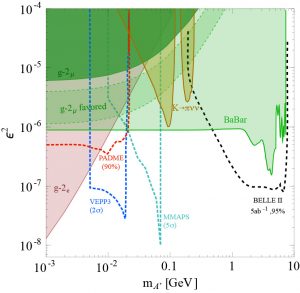A group of Cornell Laboratory for Accelerator-based Sciences and Education (CLASSE) physicists, coming from Cornell University, Ithaca, New York, USA, went to BTF at the National Laboratory of Frascati to develop a new detector with capabilities to chase a new possible particle: dark photon, one possible manifestation of dark matter, potentially produced in electron-positron annihilations.
To pursue their tests, the Cornell team chose the BTF, taking advantage of the effectiveness of the facility in conditioning the DAΦNE LINAC primary beam to produce intense secondary beams of both electrons and positrons, adapting them to the particular requirements of the detector. This latter is a calorimeter prototype, an assembly of 16 Cesium Iodide crystals previously installed in CLEO experiment at Cornell with a readout of phototubes borrowed from BaBar experiment at SLAC.
Having received the shipment from America, the detector was reassembled in BTF: during the week of testing, the team has explored different energies of the beam, intensity and geometry with the duty to measure the calorimeter performances.
“The BTF is a great place to work and we were fine like at home, to our CHESS facility,” said Jim Alexander, leader of the team. “We enriched and strengthened the ties to our European colleagues, whose interest in dark photon is closely parallel to our own, and may foretell future, continued, collaboration.”
The mission was financed by a grant from the Italian Foreign Ministry in order to foster international scientific collaboration USA-Italy on such a kind of research.

 INFN-LNF Laboratori Nazionali di Frascati
INFN-LNF Laboratori Nazionali di Frascati